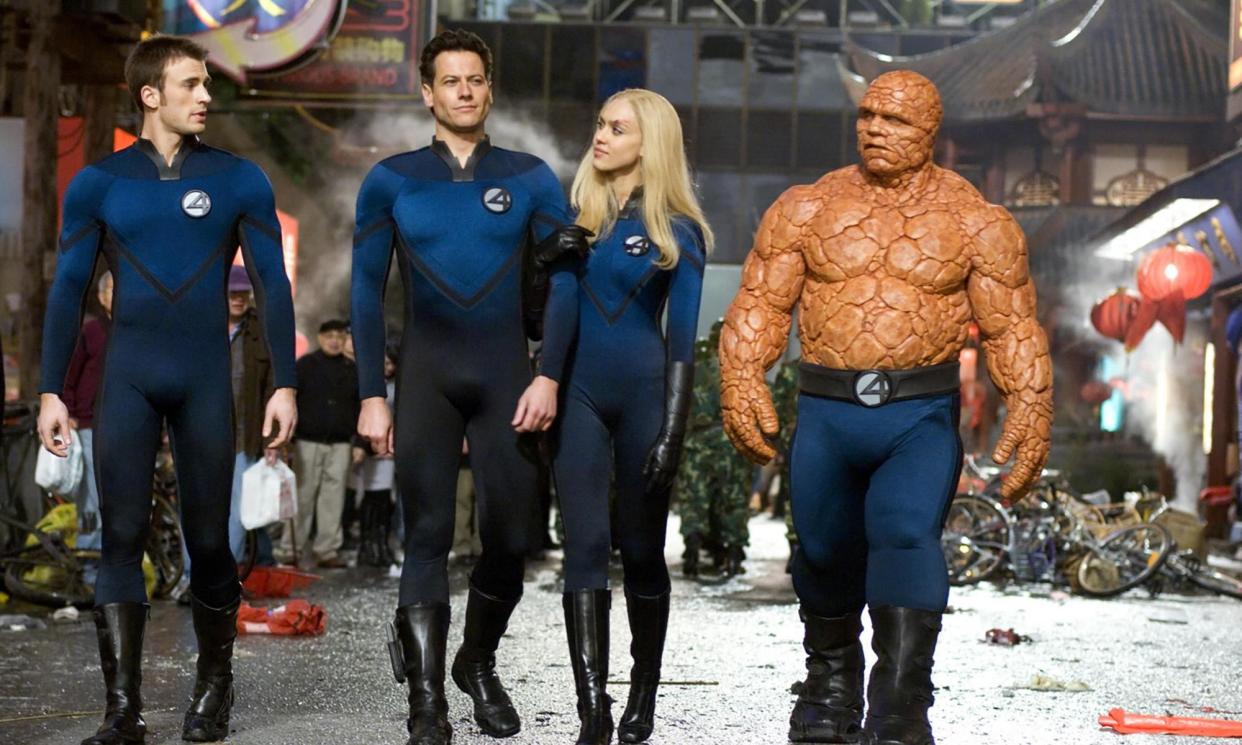Is Marvel breaking all its own rules with the new Fantastic Four movie?

Once upon a time, every new superhero movie seemed to exist in (not-so) splendid isolation. Michael Keaton’s Batman never met Christopher Reeve’s Superman, despite the cities of Gotham and Metropolis being situated less than 300 miles apart in many DC comic book tales. When Sony’s Spider-Man found himself under threat from the likes of the Green Goblin, Doc Ock and even a nefarious Symbiote in the early to mid-noughties Tobey Maguire films, he did not dial up Iron Man or send an email into space for the attention of one Thor Odinson of Asgard – because those characters were inconveniently owned by someone else. Only in the comics was Ant-Man likely to bump into the Hulk, or Mister Fantastic make the acquaintance of Captain America. Until more than a decade into the 21st-century, big screen superheroes existed like spandex-sporting Robinson Crusoes destined never to meet their Man Fridays.
It was Marvel Studios, beginning with 2012’s The Avengers, that popularised a brave new world of interconnected superheroes who could pop up over and over again in different movies, usually portrayed by the same actors. The Marvel Cinematic Universe broke all the rules of superhero film-making, and made us wonder why anyone ever had them. Suddenly, heroes and villains were capable of extended, multiple episode character arcs that added a richness and realism to proceedings that had rarely been seen before. Iron Man might just have invented time travel, but on a psychoanalytic level he felt like a real person capable of genuine human emotions, soaring success, abject failure … ahem, casual sexism … and everything in between. Each new superhero to emerge fully formed into the Marvel multiverse felt intelligently connected to all the others, ripples in the fabric of reality in one corner of the multiversal web somehow affecting matters somewhere else entirely in unexpected ways (at least until the more recent, weaker films).
All of which might leave us wondering exactly why Marvel supremo Kevin Feige has just revealed that the new Fantastic Four film, in which Reed Richards, the Invisible Woman, the Human Torch and the Thing are about to debut for Marvel movies, will take place (at least initially) somewhere that does not appear to be in the MCU at all. Speaking on the latest episode of the Official Marvel Podcast, Feige confirmed suggestions that the film will be set in the 1960s, but hinted heavily that this will be a very different version of 20th-century terrestrial reality to any we’ve yet seen.
🔥🔥🔥🔥 #TheFantasticFour
Celebrate 4-4 Day at: https://t.co/0L6vmfvKPN pic.twitter.com/byRvjcbsNf— Marvel Studios (@MarvelStudios) April 4, 2024
“It is a period film,” said Feige. “There was another piece of art we released with Johnny Storm flying in the air, making the 4 symbol and there was a cityscape in the corner of the image. And there were a lot of smart people who noticed that the cityscape doesn’t look exactly like the New York that we know or the New York that existed in the ’60s in our world. Those were smart observations.”
This is nothing new for Marvel, in a sense. The advent of alternate realities in episodes such as Spider-Man: No Way Home and Doctor Strange in the Multiverse of Madness, not to mention the TV series Loki, means we’re used to seeing our heroes jumping from one universe to the next. Moreover, the absence of the Fantastic Four from the MCU would explain why nobody has ever mentioned them up until now. And yet if Feige really is hinting that the team will begin their journey in a different universe to the Earth 616 we’ve become used to, and which so closely resembles our own without the superheroes, this is still something new and different.
Rather than starting out in our own world, these are superheroes from another universe who are (presumably) likely at some stage to make the time and reality jump so that they can interact with the characters we already know. That is after all, kind of the point of Marvel on the big screen, even to the extent that we now have superheroes who once existed in entirely different film series – Spider-Man and his various enemies in No Way Home; Deadpool and Wolverine in the forthcoming Shawn Levy film – happily fistbumping the MCU crew.
Of course, Marvel might just do something truly original here and keep the awesome foursome trapped in their own world, despite the fact that they have every means of bringing them into the big, multiversal picture. Who wouldn’t want to explore a super-stylised, fantasy take on the 1960s where everything is slightly different from our own world, in appealingly far-out and intriguing ways? Maybe the Beatles are all Martians – who knows how weird this stuff could get? But wouldn’t that, in a sense, be cheating, given how Marvel has spent all its time and effort since 2008’s Iron Man convincing us that everything is connected, to the extent that every other studio making superhero movies has become too embarrassed to do anything but mimic its more successful rival?
The short odds are on the Fantastic Four making the leap pretty quickly. It might not happen in the space of a single movie but, when it does, the results could be seismic – or at least amusing. For if advance publicity really does offer a realistic look at the groovy retro world where the quartet begin their journey, this is going to be the nuttiest fish-out-of-water tale since Arnold Schwarzenegger went chariot racing and fought a bear in Central Park in 1970’s Hercules in New York.

 Yahoo Movies
Yahoo Movies 
